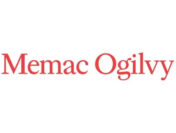Google, in conjunction with the IPG Media Lab, a division of IPG Mediabrands, released the results of the industry’s first global comprehensive branded content effectiveness study.
The study found that the while consumers have a savvy POV on branded content – they realize it is part of the overall marketing strategy, but see it distinctly different than standard video ads. They view branded content as providing more consumer-centric information, as opposed to brand-centric.
Contrary to what marketers might think, the entertainment factor is simply table stakes. Providing content that is trustworthy and informative, while staying authentic to the brand, is much more important for building brand metrics.
On the other hand, marketers should be thoughtful about where their content lives. The same piece of branded content performs very differently depending on the website on which it appears. In other words, the website has a halo effect on the brand, the report said.
The study aimed to understand consumer perceptions and to compare the effectiveness of branded content and video advertising. “Branded content, in the right context, is a great way for brands to engage with their customers. We see examples of this on YouTube every day, with more brands creating original content like how-to videos and tutorials, or collaborating with a YouTube creator to reach their audience. This research from IPG Media Lab and Google gives marketers some insights into the best ways to incorporate branded content into an overall campaign,” commented Torrence Boone, VP, Global Agency Sales & Services.
Consumers know the difference
The study showed that consumers understood that branded content is part of brands’ advertising strategies, however, perceptions varied by country. Consumers in the Middle East were least discerning about branded content, whereas countries such as Portugal, Thailand, Chile and Poland were the most.
“Our data indicates there are clear best practices marketers can take advantage of when creating and deploying branded content. Naturally, marketers spend more time and budget creating this custom content, so having these guidelines based on improving brand perceptions and driving purchase intent is invaluable,” shared Kara Manatt, VP Consumer Research Strategy.
Increased Persuasiveness and Effectiveness
The study found that, on average, branded content increases brand favorability by more than 14 per cent and purchase intent by more than 9 per cent. The findings go much further by showing how brands can optimize based on:
- Level of Quality: High quality content led to 10 per cent greater increase in purchase intent compared to low, indicating it’s worth investing the extra time and effort during the curation phase.
- Type of Content: Providing trustworthy information was a much stronger driver of effectiveness than other commonly perceived drivers, such as originality and entertainment.
- Brand Mentions: While videos with higher levels of branding were more likely to come across as trying to “sell a product,” trust in the information conveyed was the same.
- Location of Content: Premium sites can have a halo effect on preference and intent. The more consumers liked the site, the greater the impact the branded content had on brand KPIs.





